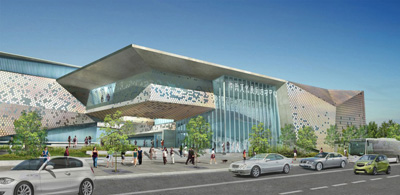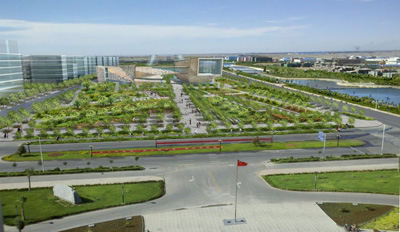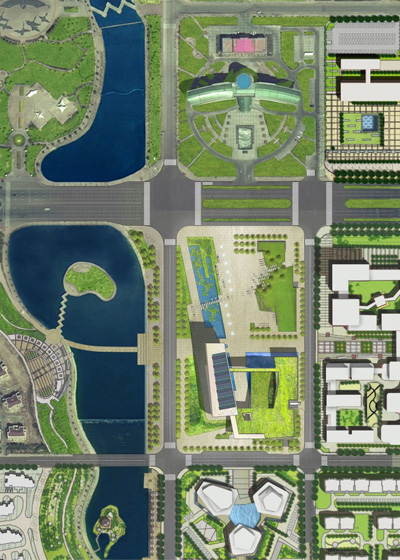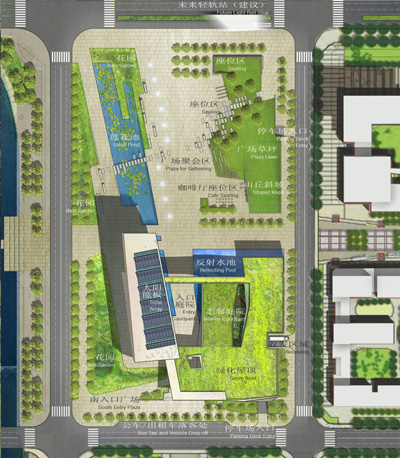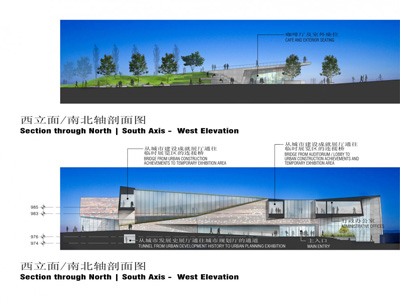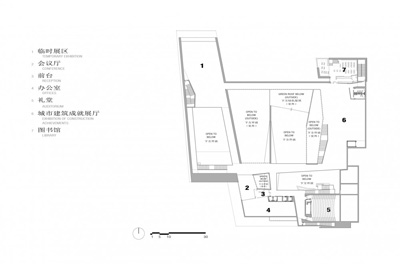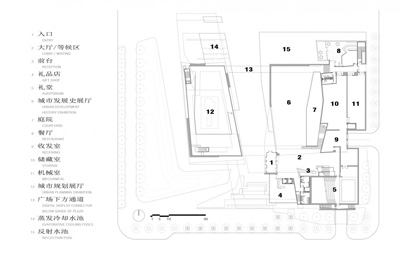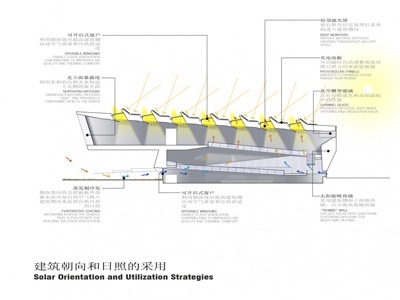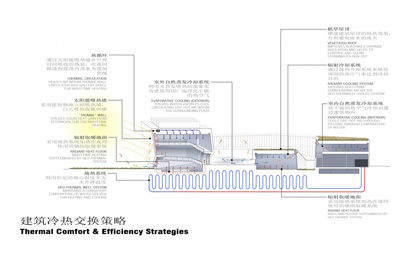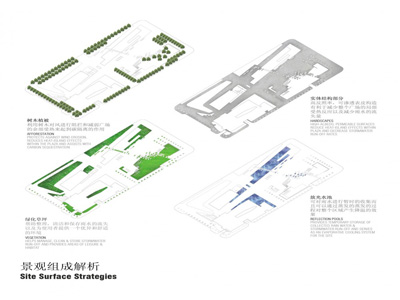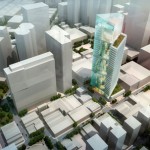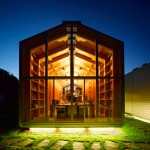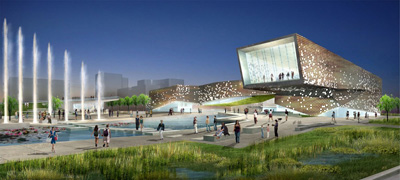
Project: Cultural Center
Designed by inFORM Studio
Project Team: Kenneth Van Tine, Gina Van Tine, Michael Guthrie, Cory Lavigne, Robert Miller, Anna Haezebrouck, Jordan Whitted
Location: Korla, China
Scope: 8,000 sqm
Website: www.in-formstudio.com
City of Korla selects InForm Studio's project as the winning design for their Cultural Center in an international competition, the building set to become the new landmark for the prosperous region will also embrace the eco-friendly standards. For more images and architects description continue after the jump:
Korla is in a unique location situated above the Taklamakan Desert and at the foothills of a mountain range on the other side of Lake Bosten. Ecological and geological extremes practically co-exist within Korla yielding a tremendous opportunity to exemplify both conditions as part of the project morphology. Water is important to the region in general despite the abundance within Lake Bosten itself. Special care is given to the utilization of water through rainwater capture, greywater recycling, stormwater retention, and its use within the geothermal system. The connection of the project to water is celebrated in its use within the landscaping with reflection pools, evaporative cooling pools, a lotus flower pond, and a series of synchronized water entertainment fountains.
Climatically, the building responds morphologically to the many attributes that characterize the region including, dryness, large daily temperature fluctuations, prevalent sunshine, and consistent ground temperatures below the surface. The abundant sunshine is a tremendous asset to the reduction of energy through the proper use of daylighting. Additional energy will be saved by the use of trombe walls and a geothermal system bringing an earthy stability to the variable temperatures throughout the day. Providing a thick building skin with a perforated quality takes advantage of these conditions.
The overall building form is reminiscent of the mountain strength that is so powerful within the region with a human-scale of a lotus flower pattern that is used as a strategy of panelizing the facade as well as perforating the exterior skin for daylighting. Views are primarily internal as the nature of exhibition demands, however, striking moments within the building provide grandiose views of both the canal and the mountains to the north.
Several opportunities exist to further reduce the use of energy within the building including natural ventilation. The cool air drawn in over the chilled pools will provide a stack affect in the tall spaces as the air is warmed towards the daylighting windows above. The overall reduction in energy required to facilitate mechanical operations provides opportunities of southern oriented building integrated photovoltaic panels to contribute more significantly to the percentage of energy production.
Clean water, clean air and an insightful respect for the regional ecology are some of the tangible benefits of this design for the Civic Cultural Exhibition and Activity Center. Moreover, the powerful architectural statement will become a symbol for this commitment to a sustainable future.
As seen on ArchDaily.*


